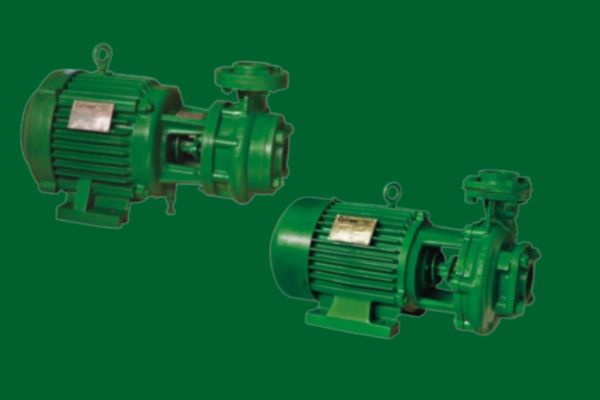Centrifugal Pumps are dynamic rotodynamic pumps used to transport fluids by converting rotational kinetic energy to the hydrodynamic energy of the fluid flow. The rotational energy typically comes from an engine or electric motor. They are widely used due to their simple design, high efficiency, and ability to handle large volumes of fluid. In this comprehensive guide, we’ll delve into the working principles, components, and diverse applications of Centrifugal Pumps.
Understanding the Working Principle
The operation of a Centrifugal Pump relies on the principle of centrifugal force. Here’s a step-by-step breakdown:
- Fluid Entry: Fluid enters the pump through the suction inlet, which is typically located at the center of the impeller.
- Impeller Rotation: The impeller, a rotating component with curved vanes, imparts kinetic energy to the fluid. As the impeller spins, it forces the fluid outwards.
- Velocity Increase: As the fluid moves from the center of the impeller to its outer edges, its velocity increases significantly.
- Conversion to Pressure: The high-velocity fluid then enters the volute or diffuser casing. The volute is a spiral-shaped chamber that gradually increases in cross-sectional area. This design converts the kinetic energy of the fluid into pressure energy. The diffuser performs a similar function by slowing down the fluid gradually.
- Discharge: Finally, the high-pressure fluid is discharged through the pump’s outlet.
Key Components of a Centrifugal Pump
- Impeller: The rotating component with vanes that imparts kinetic energy to the fluid.
- Casing: The housing that encloses the impeller and collects the fluid. It is designed to convert kinetic energy into pressure energy.
- Shaft: Connects the impeller to the motor and transmits the rotational force.
- Seals: Prevent leakage of the fluid from the pump.
- Bearings: Support the shaft and allow it to rotate smoothly.
- Motor: Provides the power to rotate the impeller.
Applications of Centrifugal Pumps
Centrifugal Pumps are used across a wide range of industries and applications:
- Water Supply: For pumping water from wells, rivers, and reservoirs to supply water to homes, businesses, and farms.
- Wastewater Treatment: Moving wastewater through treatment plants for processing and disposal.
- Agriculture: Irrigation, providing water for livestock, and applying fertilizers and pesticides.
- Oil and Gas: Transferring crude oil, refined products, and other fluids in pipelines and processing plants.
- Chemical Industry: Handling various chemicals and corrosive fluids in manufacturing processes.
- Power Generation: Cooling water circulation in power plants.
- HVAC Systems: Circulating water or other fluids in heating and cooling systems.
- Food and Beverage: Transferring liquids like milk, juice, and sauces in processing plants.
- Fire Protection: Providing a reliable water supply for fire sprinkler systems.



